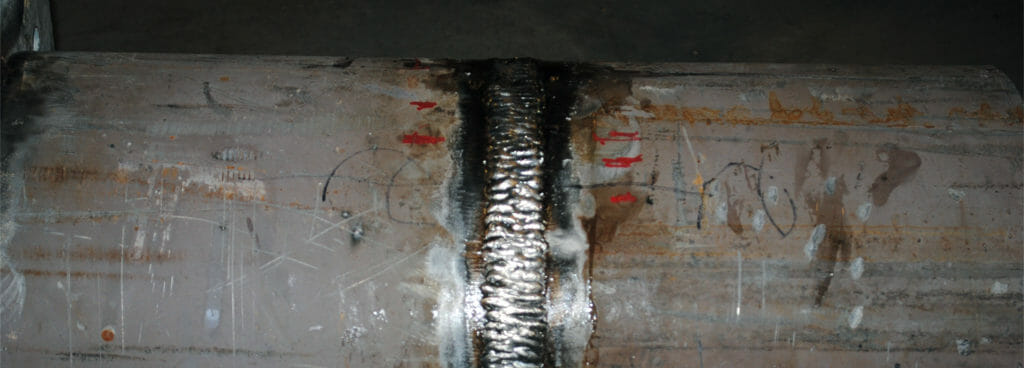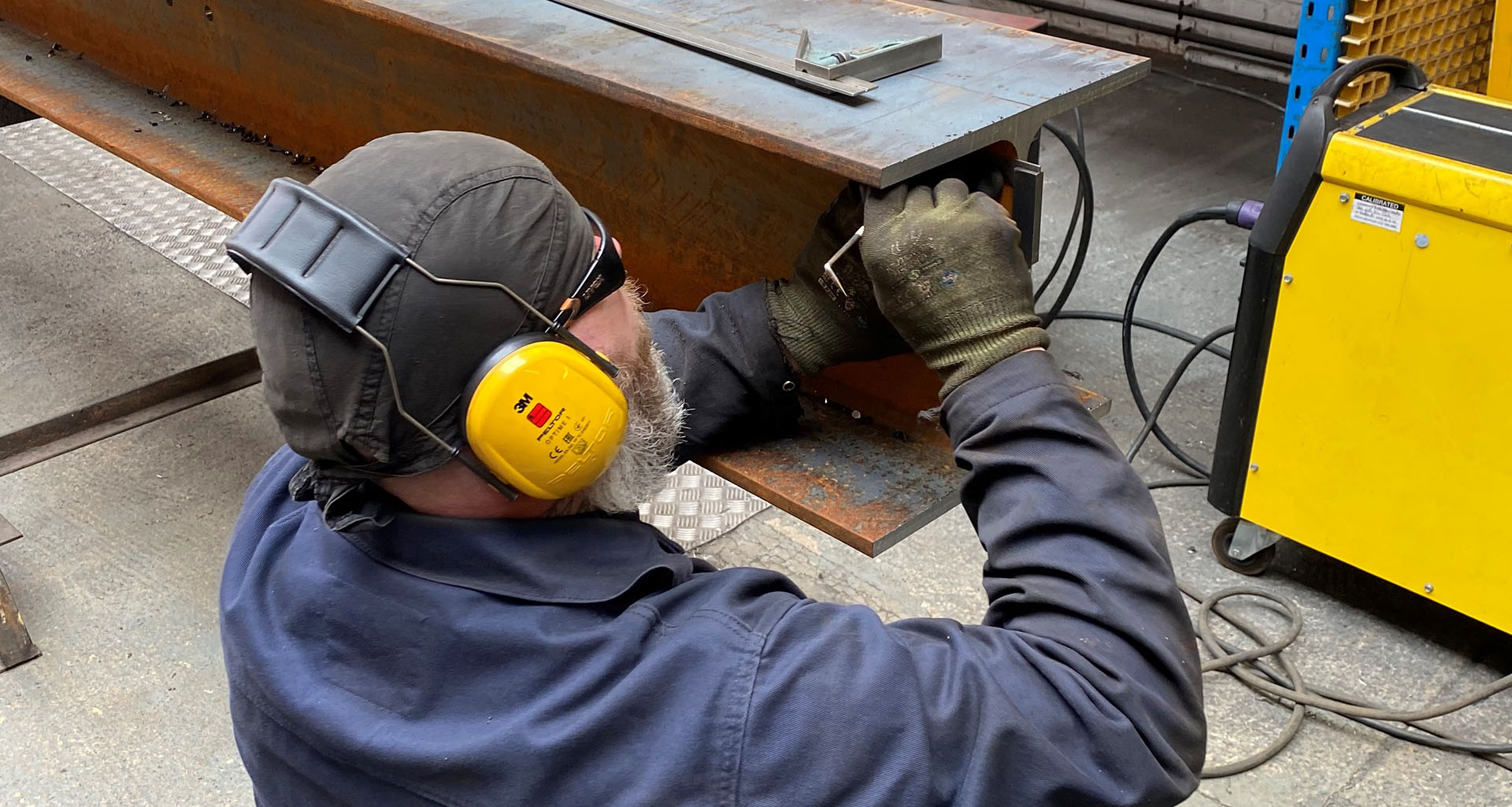The Relevance of Thorough Welding Examination in Industrial Applications
In the realm of industrial applications, the relevance of precise welding inspection can not be overemphasized. It plays a vital role in making sure the structural honesty and longevity of bonded components. Advanced non-destructive screening techniques enable the early detection of possible problems, such as splits and incomplete blend, which, if left unchecked, might lead to disastrous failings. Furthermore, adherence to rigorous industry requirements not just ensures top quality but additionally builds client self-confidence. As we check out the complex advantages of diligent welding assessments, one have to take into consideration the broader ramifications on safety and security, integrity, and cost-effectiveness in industrial operations.
Enhancing Architectural Stability
When it pertains to welding assessment in commercial applications, improving structural integrity is paramount. The key objective of welding examination is to make certain that the welds are qualified of birthing the expected stresses and lots they will certainly come across in service. This involves a complete examination of the welds' dimensions, alignment, and total top quality, guaranteeing they fulfill the specified codes and standards. Accurate inspection methods, such as aesthetic assessment, ultrasonic testing, and radiographic screening, are critical in recognizing concerns that might compromise the structure's safety and security and capability - Welding Inspection Madison.
The importance of preserving architectural integrity in bonded structures can not be overstated. Poorly carried out welds can lead to devastating failings, resulting in expensive fixings, downtime, and even endangerment of human lives. Consequently, inspectors play an important role in the lifecycle of industrial elements, giving guarantee that the welding process provides the preferred toughness and durability.
Furthermore, advanced innovations, such as phased array ultrasonic testing and digital radiography, offer improved abilities in finding possible weak points, enabling rehabilitative actions prior to concerns intensify. By focusing on the stability of welds with precise evaluation, markets can guarantee operational efficiency and extend the longevity of their infrastructure.
Recognizing Welding Issues
Recognizing welding flaws is a critical facet of making certain the safety and security and integrity of welded structures. These defects can endanger the integrity of the whole assembly and, if left unaddressed, may bring about disastrous failures. Common welding issues include porosity, cracks, insufficient combination, and damaging. Each of these issues emerges from details reasons, such as improper welding techniques, contamination, or poor warm control.

Knowledgeable inspectors use both visual assessment and advanced non-destructive screening (NDT) methods, such as ultrasonic or radiographic screening, to discover these defects. The timely recognition and rectification of welding flaws are essential to maintain the structural honesty and long life of commercial elements.
Ensuring Compliance Requirements
Preserving the honesty of bonded structures prolongs past recognizing defects; it needs adherence to rigorous conformity standards. Compliance with well established criteria, such as those provided like this by the American Welding Society (AWS) and the International Organization for Standardization (ISO), makes sure that welds fulfill minimal safety and security and quality requirements. These requirements include a variety of requirements, consisting of product requirements, welding treatments, and credentials of welders. Adherence to these criteria is crucial to avoid structural failures, which could result in devastating consequences in industrial applications.
Regular audits and examinations are vital in verifying compliance. Assessors need to have an extensive understanding of the pertinent requirements and be experienced at making use of different non-destructive screening her response (NDT) methods to examine weld top quality. By guaranteeing that welding techniques straighten with compliance requirements, firms mitigate the danger of non-conformity, which can bring about legal responsibilities and safety dangers.
Moreover, maintaining compliance not just safeguards architectural honesty but also improves a business's online reputation in the industry. Clients and stakeholders are a lot more most likely to trust fund companies that consistently demonstrate a commitment to quality and safety through extensive compliance. Therefore, making sure conformity requirements is an essential part in the effective execution of welding in commercial applications.
Lowering Upkeep Prices

The application of sophisticated non-destructive testing (NDT) techniques, consisting of ultrasonic, radiographic, and magnetic fragment examinations, enhances the capacity to detect subsurface defects without endangering the structural stability of elements. By utilizing these methods, industries can considerably prolong the service life of their equipment, reducing downtime and the associated economic worry of upkeep tasks.
Moreover, a robust welding evaluation program supports the optimization of upkeep routines, moving from reactive to anticipating upkeep techniques. This proactive strategy not just reduces unexpected failings however likewise streamlines source allowance, guaranteeing that maintenance initiatives are focused and reliable. Eventually, the investment in strenuous welding assessment is offset by the significant cost savings realized with decreased upkeep demands, adding positively to the total operational performance of industrial ventures.
Improving Precaution
Welding assessment plays a critical role in this context, as it makes sure that all links and joints meet rigid safety and security criteria. Comprehensive evaluations assist determine flaws such as fractures, porosity, or insufficient combination that might jeopardize structural stability.
To enhance precaution, embracing sophisticated non-destructive testing (NDT) methods is vital. Techniques like ultrasonic screening, radiographic testing, and magnetic particle inspection permit thorough exam without damaging the structure. These technologies enable examiners to discover covert defects early in the construction procedure, promoting prompt restorative actions. Executing a durable high quality control system that includes normal training for welders and assessors makes sure adherence to established safety and security standards.
Lastly, cultivating a culture of security within the company highlights the relevance of extensive welding inspections. Motivating open interaction and collaboration among engineers, welders, and examiners contributes to a shared commitment to security quality. Welding Inspection Madison. In doing so, sectors can safeguard their operations, secure employees, and keep public trust

Verdict
Detailed welding examination is indispensable in industrial applications, significantly enhancing structural integrity and reliability. By using innovative non-destructive screening approaches, prospective welding flaws such as fractures and incomplete fusion are determined early, making certain conformity with market requirements and fostering customer trust fund. Extensive inspections result in lowered upkeep expenses and add to a safer working setting. Inevitably, the thorough execution of welding examinations plays a crucial duty in maintaining functional effectiveness and safety in commercial settings.
As we explore the diverse advantages of thorough welding examinations, one should take into consideration the broader effects on safety, dependability, and cost-effectiveness in commercial procedures.
The primary goal of welding examination is to guarantee that the welds are qualified of birthing the expected stresses and lots they will certainly experience in solution. Reliable welding evaluation plays an important duty in minimizing these expenses by making sure the honesty and longevity of welds, thus minimizing the threat of premature failures.Extensive welding examination is essential in industrial applications, substantially boosting architectural stability and integrity. Ultimately, the diligent execution of welding evaluations plays an important function in keeping operational efficiency and safety in industrial setups.